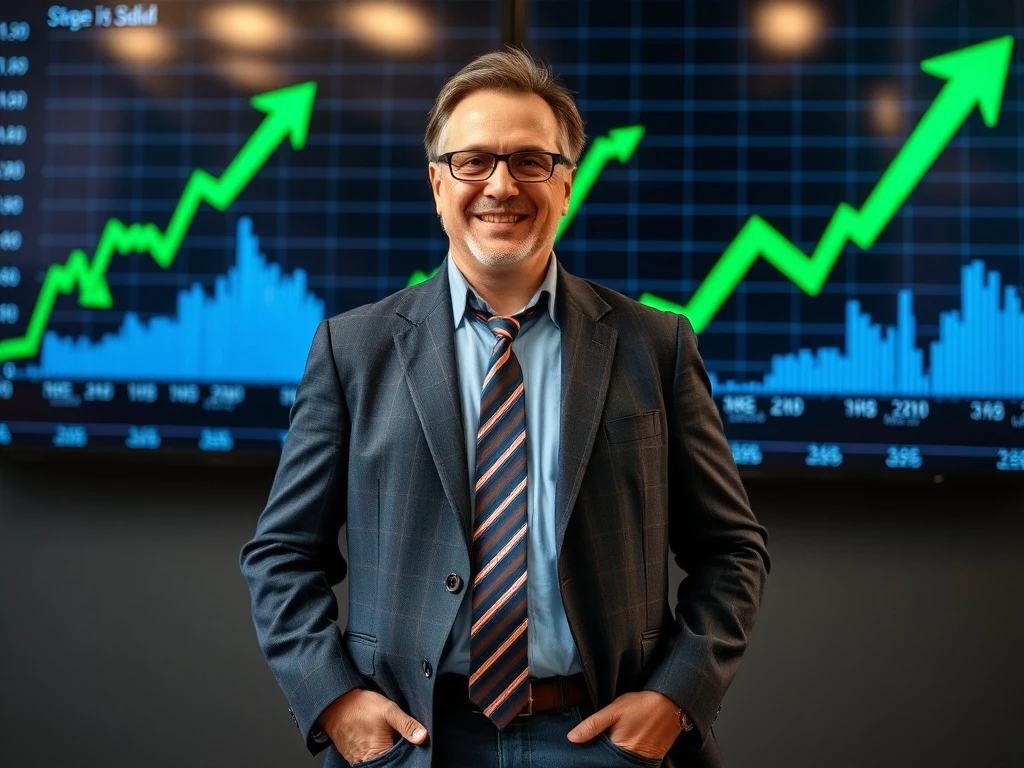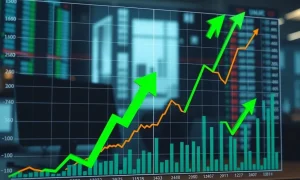Steve Eisman, the renowned investor, gained fame for his prescient bets against the housing market before the 2008 financial crisis. His story became central to Michael Lewis’s book, ‘The Big Short.’ Many recall his skeptical and often bearish stance. However, Eisman now presents a surprisingly optimistic view on the economy. This shift challenges common perceptions. Understanding the current Eisman market outlook reveals key insights into today’s financial landscape.
Understanding the Current Eisman Market Outlook
Eisman, a senior portfolio manager at Neuberger Berman, maintains a decidedly bullish posture. This contrasts sharply with his historical reputation. Indeed, his current optimism stems from several factors. He believes the United States economy remains robust. Furthermore, he sees strong corporate earnings ahead. His analysis suggests a durable economic expansion. Many investors find this perspective compelling. It provides a different narrative than widespread recession fears.
Eisman’s bullishness is not without careful consideration. He points to ongoing fiscal stimulus. Additionally, consumer spending remains resilient. These elements support his positive view. He also highlights the potential for innovation. This drives growth across various sectors. Therefore, his Eisman market outlook offers a nuanced take. It acknowledges challenges but emphasizes underlying strengths.
Key Drivers of the Eisman Market Outlook
Several fundamental factors underpin Eisman’s current optimism. First, he notes the significant capital expenditures by corporations. Businesses are investing heavily. They are upgrading infrastructure and technology. This spending indicates confidence in future demand. Moreover, it boosts productivity. This ultimately supports economic expansion.
Second, Eisman observes a strong labor market. Unemployment rates remain historically low. Wage growth, while moderating, continues. This provides consumers with purchasing power. Consequently, it sustains demand for goods and services. A healthy job market is often a precursor to sustained economic growth. Thus, it strengthens the Eisman market outlook.
Third, regulatory environments play a role. Eisman believes certain regulatory shifts foster innovation. They also encourage investment. For instance, policies supporting domestic manufacturing could create new opportunities. These factors combine to create a positive feedback loop. This cycle supports continued economic buoyancy.
- Corporate Investment: Significant capital expenditures signal business confidence.
- Strong Labor Market: Low unemployment and steady wages support consumer spending.
- Favorable Regulation: Policies potentially spurring innovation and domestic growth.
The Next Big Trade: What Eisman Sees Coming
Eisman does not just offer a general bullish sentiment. He identifies specific areas for future growth. He points to the energy transition as a major investment theme. This includes renewable energy sources. It also encompasses grid modernization. Furthermore, battery technology presents opportunities. The shift away from fossil fuels requires massive investment. This creates new industries and jobs. He sees this as a multi-decade trend.
Another area of focus for Eisman is infrastructure. The need for upgraded roads, bridges, and public utilities is clear. Government spending plans aim to address these needs. This creates a pipeline of projects. Companies involved in construction and materials stand to benefit. Therefore, these sectors form a significant part of his ‘next big trade’ thesis. This aligns with his overall Eisman market outlook.
Finally, artificial intelligence (AI) remains a compelling sector. Eisman recognizes the transformative power of AI. It will reshape industries. It will also create new efficiencies. Companies leading in AI development or adoption are attractive. He views AI as a long-term growth driver. These specific areas reflect his deep analysis of market trends.
Contrasting Views: From Bear to Bull
Steve Eisman earned his reputation as a formidable bear. His successful shorting of subprime mortgages is legendary. This earned him significant recognition. Many investors remember his dire warnings. He famously identified systemic risks within the financial system. His previous predictions often focused on market vulnerabilities. Therefore, his current bullish stance surprises some observers.
This shift is not arbitrary. Eisman adapts his views based on evolving economic data. He does not hold a fixed ideology. Instead, he assesses current conditions. He then adjusts his investment thesis accordingly. His present optimism reflects a belief that the systemic risks of the past are largely contained. Regulatory changes have strengthened financial institutions. This contrasts sharply with the pre-2008 environment. His flexible approach defines the current Eisman market outlook.
His transition highlights a key lesson for investors. Markets are dynamic. Successful investors must remain adaptable. They must re-evaluate assumptions constantly. Eisman exemplifies this principle. He moves from identifying bubbles to spotting growth opportunities. This adaptability underscores his enduring influence in finance.
Navigating Risks in the Current Eisman Market Outlook
Despite his bullishness, Eisman acknowledges potential risks. No market outlook is without its challenges. Inflation remains a concern for many. Persistent price pressures could erode consumer purchasing power. This might dampen economic growth. Furthermore, geopolitical tensions pose unpredictable risks. These can disrupt supply chains. They can also impact global trade. Investors must consider these factors.
Interest rate policies also present a variable. Central banks adjust rates to control inflation. Higher rates can increase borrowing costs. This might slow down business expansion. It could also affect consumer credit. Eisman weighs these potential headwinds. However, he believes the economy can absorb them. His assessment suggests resilience. Therefore, the overall Eisman market outlook remains positive, even with these considerations.
Market volatility is always a factor. Unexpected events can trigger sharp downturns. Investors should prepare for fluctuations. Diversification remains a crucial strategy. While Eisman sees a positive path, prudence is always advised. His analysis encourages a balanced view. It suggests optimism, but with an awareness of potential pitfalls.
In conclusion, Steve Eisman, the investor celebrated for ‘The Big Short,’ now stands as a steadfast bull. His current Eisman market outlook emphasizes the resilience of the U.S. economy. He points to strong corporate investment and a robust labor market. He also highlights the transformative potential of energy transition and AI. While acknowledging risks like inflation and geopolitical instability, Eisman maintains his optimistic stance. His adaptable approach offers valuable insights for navigating today’s complex financial world.
Frequently Asked Questions (FAQs)
What is Steve Eisman’s current stance on the market?
Steve Eisman is currently a ‘stubborn bull’ on the market. He believes the U.S. economy is robust. He also sees strong corporate earnings and continued growth ahead. This optimistic Eisman market outlook contrasts with his past bearish positions.
What factors contribute to Eisman’s bullish outlook?
Eisman’s bullishness stems from several factors. These include significant corporate capital expenditures. He also notes a strong labor market. Furthermore, he identifies favorable regulatory environments. These elements support his positive view of economic expansion.
What specific sectors does Eisman see as the ‘next big trade’?
Eisman identifies several key areas for future growth. He points to the energy transition. This includes renewables and grid modernization. He also highlights infrastructure spending. Finally, artificial intelligence (AI) remains a compelling sector for long-term investment. These are central to his Eisman market outlook.
How does Eisman’s current view compare to his ‘Big Short’ fame?
Eisman gained fame for shorting the housing market before 2008. This was a highly bearish stance. His current view is distinctly bullish. This shift reflects his adaptable investment philosophy. He adjusts his outlook based on evolving economic conditions and data.
What risks does Steve Eisman acknowledge in his market outlook?
Eisman acknowledges potential risks despite his optimism. These include persistent inflation. Geopolitical tensions also pose unpredictable risks. Furthermore, interest rate policies could impact growth. However, he believes the economy can largely absorb these challenges.
Does Eisman recommend specific stocks or investments?
While Eisman highlights sectors like energy transition, infrastructure, and AI, he typically does not recommend specific stocks. His focus is on broader market trends and economic shifts. Investors should conduct their own research or consult a financial advisor for specific investment decisions.








